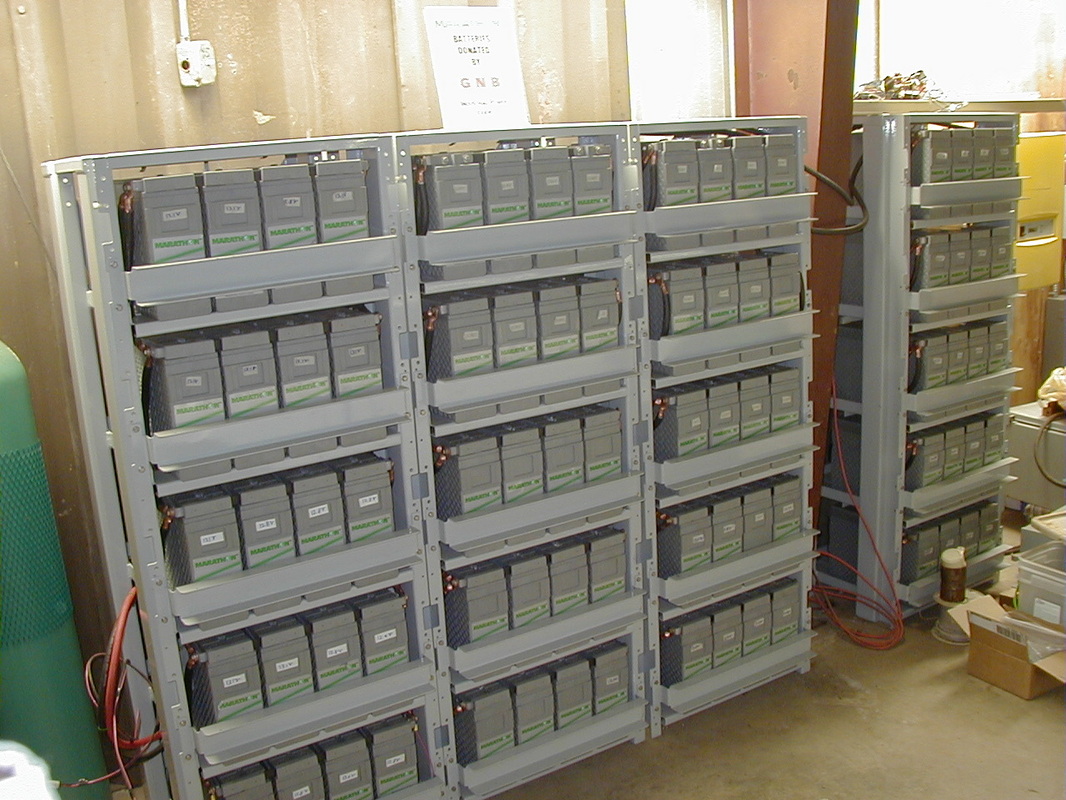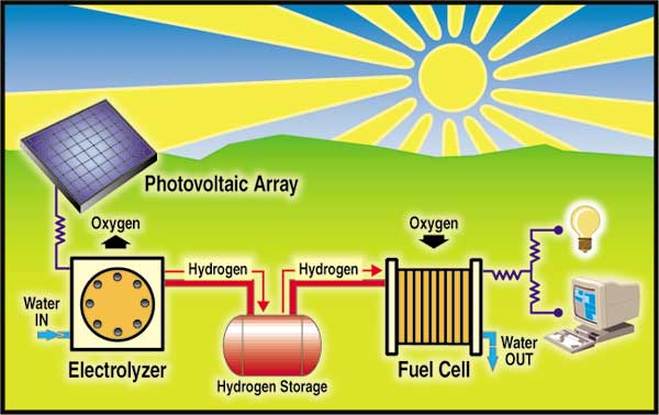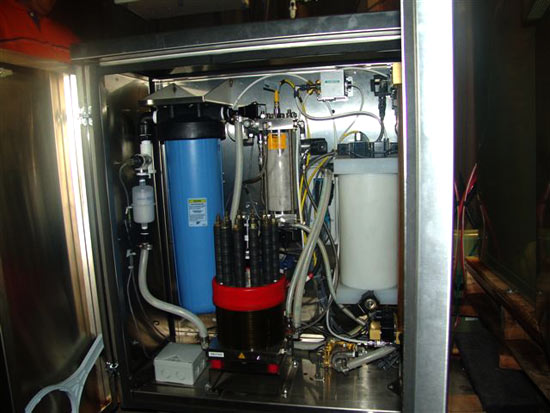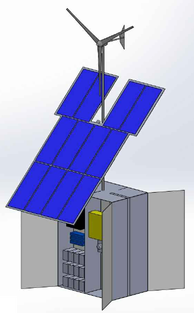Solar Storage Solution
Solar-hydrogen systems can turn water into cheap storable energy.

Prices are dropping for residential solar panels, and new financing options are making photovoltaic (PV) solar power even more attractive these days. In the third quarter of 2012 alone, the residential PV sector installed over 118 MW of capacity in the United States. In March of 2013, 100% of added U.S. energy capacity was solar. Although we still have far to go to reduce the cost per kW to compete with existing fossil-fueled electricity, we're on the right path.
One of the biggest drawbacks of all renewable energy sources is the need for a backup or supplementary energy source when the sun isn't shining. If you don't have a grid-tied system to draw on utility power, banks of batteries can provide backup power for a short time, but they lose effectiveness once they get below 30% to 40% of charge.
The Hydrogen House Project

In 2006, inventor Mike Strizki converted his Hopewell, New Jersey, home to run exclusively off solar panels and hydrogen power. Strizki combines clean energy technologies both to power his home and to convert excess solar power into hydrogen by electrolysis. In the winter, when the solar panels supply only an approximate 60% of his power requirements, the stored hydrogen powers a fuel cell to generate the supplementary electricity needed.
Ironically, Strizki's system suffered damage to the inverters and the fuel cell during Hurricane Irene in 2011, when a tree fell on the power line that feeds his surplus power to the grid. If that line hadn't been connected, he would have avoided the setback.

The system
The system was designed by using the most efficient technologies available at the time, starting with a well insulated modular home heated by a geothermal system. Sunlight is collected with a 21 kW mix of thin film and polycrystalline solar panels. The panels provide power directly to the inverters as well as an electrolyzer which splits water molecules (H2O) into hydrogen for fuel and medical-grade oxygen. The hydrogen gas is stored in 10 large tanks (repurposed propane tanks) at low pressure (200 psi). When needed for electricity, the hydrogen is recombined with oxygen to power a 5 kW fuel cell. The only emission from this process is chemically pure water.
Hydrogen can be stored indefinitely and can also power fuel cell vehicles. It can also be used for heating and cooking just as natural gas is used. Strizki has converted his appliances to run on hydrogen as well as his commercial-type lawn mower and other special vehicles, including his hydrogen-fueled car.

A year after Hurricane Irene damaged the Hydrogen House's system, Hurricane Sandy arrived, but Strizki was ready. His neighbors with grid-connected solar panels couldn't legally use them due to potentially dangerous back-feeding, and getting fuel for backup generators was next to impossible. Strizki deployed his version of the backup generator, dubbed the “Joule Box," a smaller-scale version of his home system, capable of supplying and storing 4 kW of power. For six weeks after Hurricane Sandy hit, neighbors would stop by to take showers, to cook, or to use the bathroom while waiting for their power to be restored.
Model for the future
Strizki's system is remarkable but definitely not cheap, coming in at a cost of almost half a million dollars. Like any prototypical system, its development cost was high but so was its scalability. The Hydrogen House Project is now a non-profit organization with a mission to become a world resource for renewable energy. The house itself will be transformed into a hands-on educational facility for demonstrating how these solar–hydrogen technologies work.
Strizki's solar–hydrogen projects so far include the following:
-
Joule Box Portable Charge Station
-
Hydra Mobile Generator and Water Purifier
-
Peugeot H2O Hydrogen Fuel Cell Fire Engine
-
Fuel Cell Airplane
Filmmaker Michael Henning of Sovran Films recognizes the struggles Mike Strizki has gone through to get his remarkable technology into the global spotlight and is working on a documentary film “Strizki: Keys to the Cage” slated for release late in 2013.
Tours of Hydrogen House can be arranged here.

Rick Atkinson
Rick Atkinson works from (and on) his century-old farmhouse in New Brunswick, Canada. His professional and freelance career has ranged widely, contributing to an unusual mix of experience: as musician, retail manager, video producer/editor, CAD designer, woodworker, DIYer, beekeeper. He keeps a close eye on global events, particularly energy and climate change, new technologies, and long-term social and economic trends. Currently, Rick freelances in Kitchen & Bath cabinet design and CAD drawings for a custom cabinet shop. After hours, he creates original woodworking projects and plans, and writes about home improvement and design on his blog,StonehavenLife.com.

